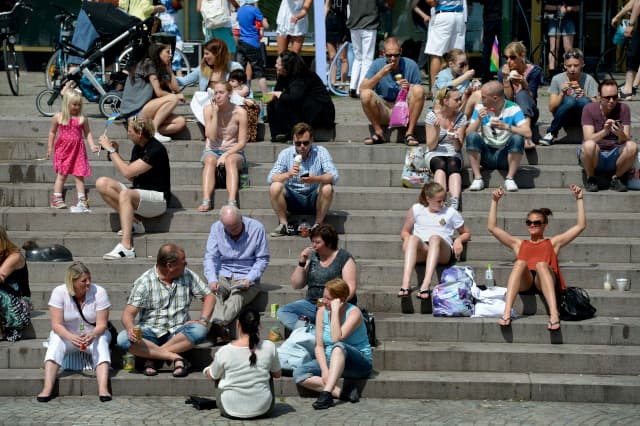NEW STATS: One in three live in Sweden's nine biggest cities

One in three Swedish residents now live in one of the country's nine largest cities, new stats reveal.
The number of residents in cities with a population greater than 100,000 grew by 1.4 percent – or 44,372 people to be exact – to a total of 3,269,000 residents last year, according to preliminary population figures by Sweden's national number-crunching agency Statistics Sweden.
Those cities are:
Stockholm (1,583,374)
Gothenburg (599,011)
Malmö (316,588)
Uppsala (160,462)
Upplands Väsby and Sollentuna (144,826)
Västerås (122,953)
Örebro (120,650)
Linköping (111,267)
Helsingborg (109,869)
In total, the number of people living in so-called tätorter (a Swedish term defined as a settlement of over 200 residents) grew by almost 80,000 people – or one percent – to almost nine million people by the end of 2018. That's 87 percent of Sweden's total population of more than 10.2 million.
READ ALSO:
-
Rural Sweden is losing young people, but that's not the whole story
-
What's it like to swap city life for the Swedish countryside?
The Swedish government has previously pledged to work to bridge Sweden's growing rural-urban divide. The country's rural communities have long been struggling with the effects of long-term population loss to the cities, which are growing and developing while rural towns and areas are shrinking.
Around half of the country's municipalities have smaller populations compared to three decades ago, and many are fighting to survive amid a loss of vital shops and services.
Statistics Sweden's latest figures are based on preliminary statistics, and the definitive results will be released in October 2019.
Comments
See Also
The number of residents in cities with a population greater than 100,000 grew by 1.4 percent – or 44,372 people to be exact – to a total of 3,269,000 residents last year, according to preliminary population figures by Sweden's national number-crunching agency Statistics Sweden.
Those cities are:
Stockholm (1,583,374)
Gothenburg (599,011)
Malmö (316,588)
Uppsala (160,462)
Upplands Väsby and Sollentuna (144,826)
Västerås (122,953)
Örebro (120,650)
Linköping (111,267)
Helsingborg (109,869)
In total, the number of people living in so-called tätorter (a Swedish term defined as a settlement of over 200 residents) grew by almost 80,000 people – or one percent – to almost nine million people by the end of 2018. That's 87 percent of Sweden's total population of more than 10.2 million.
READ ALSO:
- Rural Sweden is losing young people, but that's not the whole story
- What's it like to swap city life for the Swedish countryside?
The Swedish government has previously pledged to work to bridge Sweden's growing rural-urban divide. The country's rural communities have long been struggling with the effects of long-term population loss to the cities, which are growing and developing while rural towns and areas are shrinking.
Around half of the country's municipalities have smaller populations compared to three decades ago, and many are fighting to survive amid a loss of vital shops and services.
Statistics Sweden's latest figures are based on preliminary statistics, and the definitive results will be released in October 2019.
Join the conversation in our comments section below. Share your own views and experience and if you have a question or suggestion for our journalists then email us at [email protected].
Please keep comments civil, constructive and on topic – and make sure to read our terms of use before getting involved.
Please log in here to leave a comment.